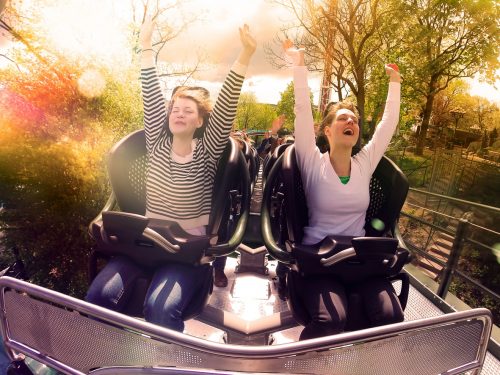
Or, Why Value Is Not about Money.
In the old economy, the one dominated by goods, value was created through the transfer of ownership. I create or produce something; and when I transfer the ownership to you, you give me money in return. The way you check the value of what you bought has to do with the specifications. Whether you are looking for strawberries or a new car, it is about product attributes. This ‘widget’ is _______ (stronger, faster, slimmer, tastier…) than the other ones you have looked at.
In the new economy, the service economy, value is created in use.
When I rent a car, use a consultant, or search for a great place to stay for my vacation, there is no transfer of ownership. It is all about utility – I need something, and my preferred service is the one that best takes care of that need. When my need is met, it translates into a result for me. And most of us are more than happy to pay for getting the result we need.
So, if our aim is to create a great customer service experience, the starting point is to make sure that what we are offering matches the value expectation of the customer.
In order to do that, we use the Value Equation – a tool that originates from the research conducted to produce the Service Profit Chain framework. The Value Equation has four elements:
R Is for Result.
What is the result that the client is expecting or looking for? Do we understand the need? If I buy an airline ticket from Paris to Rome, and we end up in Berlin, the airline did not deliver the result that I was expecting. So, no matter how cheap the ticket is or how many drinks they serve, it is a lousy service experience. Do you book a table in a restaurant because you are hungry? Maybe. More often, you have a different need. Maybe you are looking for a special moment, an occasion to celebrate or an ideal setting for a special conversation. Whatever it is, the food is just an instrument in providing the real result that you are looking for.
This means that for every service product we create, we need to ask ourselves, “What is the result they are looking for?”
P Is for Process.
You can fly from A to B with many different airlines. In general, they will all get you to where you planned to go; but each one does it their way. The difference comes out in their process.
From a customer’s point-of-view, process has five elements. Each plays a part when evaluating to what extent the value proposition actually covered their needs.
Time: How does time play into the need or result that they have? Is it important that we are on time? Is it important that we are fast or slow? If my wife and I are having dinner before the cinema, we are looking for one kind of time experience. If we are celebrating her birthday the following week, we are looking for a different kind of time experience. Same people, same restaurant, but different situations.
Reliability: Do we do what we say we will do? Are we consistent?
Competence: How does the customer experience the competence level of our employee at a given touch point? How well do our frontline teams respond when asked a question or a request for help?
Empathy: To what extent are our employees able to see the situation from the client’s point-of-view? When a customer feels understood, we are more than halfway to solving their needs.
Proof of service: Do we provide a service that the client does not notice? Are there ways that we could remind the client that we are servicing them?
Under the fraction line we have:
$ for price and E for effort: The client pays a price for our service; but depending on the service package, they also put in more or less effort themselves. If you buy a sofa from IKEA, the price is low; but you put in quite a bit of effort yourself. If you fly Virgin Upper Class, they will pick you up at your office and take you and your stuff right to the plane; A different experience than flying Ryanair, and, to be fair, also at a different price point.
So, there you have it.
If you want to understand how customers perceive value, the value equation is your key. And, your starting point for developing a great customer experience is to understand how you tailor your customer value proposition to each segment using the Value Equation.
I would be happy to send you a copy of the Value equation at a glance – just fill in your email below.










